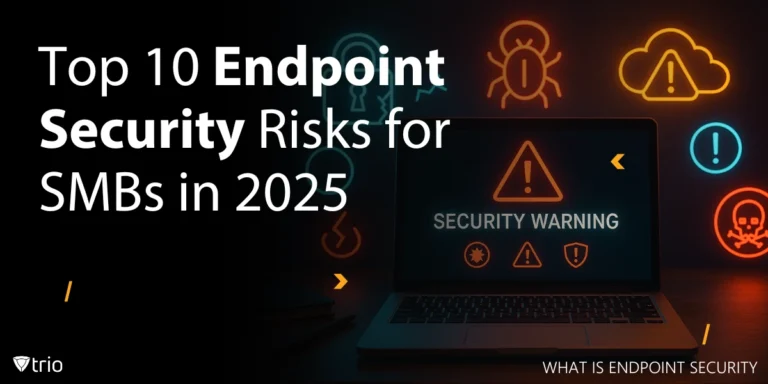Managing access control and security policies has become increasingly crucial. At the heart of this management lies the concept of a Policy Decision Point (PDP). This blog post will delve deep into the world of PDPs, exploring their meaning, architecture, and real-world applications.
What is a Policy Decision Point?
A Policy Decision Point (PDP) is a fundamental component of modern access control and authorization systems. It serves as the decision-making engine that evaluates access requests against predefined security policies. By centralizing policy decisions, PDPs enable organizations to implement consistent, fine-grained access control across diverse applications and resources.
PDPs play a crucial role in maintaining security, ensuring compliance, and enabling dynamic, context-aware access control. To fully grasp the concept and importance of PDPs, let's break down its meaning and definition.
Policy Decision Point Meaning
A Policy Decision Point, often abbreviated as PDP, is a critical component in access control systems. It's responsible for evaluating access requests against defined policies and making decisions about whether to grant or deny access. The policy decision point meaning encompasses its role as the "brain" of the access control system, interpreting and applying security policies.
Policy Decision Point Definition
To provide a formal policy decision point definition: A Policy Decision Point is an entity within an access control system that evaluates access requests against applicable policies and renders authorization decisions.
Policy Decision Point Architecture
Understanding the policy decision point architecture is crucial for grasping how PDPs function within a larger system. Typically, a PDP operates within a framework that includes several other components:
- Policy Enforcement Point (PEP): Intercepts access requests and enforces the PDP's decisions.
- Policy Administration Point (PAP): Manages and stores policies.
- Policy Information Point (PIP): Provides additional attributes or data that the PDP might need for decision-making.
The PDP sits at the center of this architecture, receiving requests from the PEP, retrieving policies from the PAP, and gathering additional information from the PIP when necessary.
How Does a Policy Decision Point Work?
- The PEP intercepts an access request.
- The request is forwarded to the PDP.
- The PDP retrieves relevant policies from the PAP.
- If needed, the PDP gathers additional attributes from the PIP.
- The PDP evaluates the request against the policies.
- A decision (permit, deny, or indeterminate) is returned to the PEP.
- The PEP enforces the decision.

Policy Decision Point Example
Let's consider a policy decision point example to illustrate its functionality:
Imagine a corporate file-sharing system. An employee, Alice, tries to access a confidential financial report. The system's PEP intercepts this request and forwards it to the PDP. The PDP then:
- Retrieves the access policy for financial reports from the PAP.
- Checks Alice's role and clearance level from the PIP.
- Evaluates whether Alice's attributes meet the policy requirements.
- Decides to grant or deny access based on this evaluation.
- Sends the decision back to the PEP, which then allows or blocks Alice's access accordingly.
This example demonstrates how a PDP makes real-time decisions based on predefined policies and contextual information.
The Importance of Policy Decision Points
PDPs play a crucial role in modern cybersecurity strategies:
Centralized Policy Management: PDPs allow organizations to manage and enforce policies from a central point, ensuring consistency across the system.
Dynamic Decision Making: Unlike static access control lists, PDPs can make decisions based on various factors, including time, location, and system state.
Scalability: As organizations grow and policies become more complex, PDPs can handle increased loads and policy intricacies.
Audit and Compliance: PDPs provide a clear record of access decisions, aiding in auditing and ensuring compliance with regulations.
Challenges and Considerations
While PDPs offer significant benefits, there are challenges to consider:
Performance: PDPs must make decisions quickly to avoid bottlenecks in the system.
Policy Complexity: As policies grow more intricate, maintaining and troubleshooting them can become challenging.
Integration: PDPs must integrate seamlessly with existing systems and applications.
Enhancing Policy Decision Points with Trio MDM
In the realm of Policy Decision Points and access control, Trio MDM emerges as a powerful solution to address the challenges organizations face in managing and implementing effective security policies.
How Trio MDM Supports Policy Decision Points
Trio MDM offers a comprehensive approach to policy management and enforcement:
Centralized Policy Management: Trio MDM provides a unified platform for creating, managing, and distributing policies across your organization, ensuring consistency and reducing the complexity of policy administration.
Dynamic Policy Enforcement: Leveraging advanced Policy Decision Point architecture, Trio MDM enables real-time, context-aware policy decisions, adapting to changing user roles, device states, and environmental factors.
Scalable Solution: As your organization grows, Trio MDM scales effortlessly, handling increased policy complexity and larger user bases without compromising performance.
Compliance and Auditing: With built-in reporting and auditing features, Trio MDM helps organizations maintain compliance with various regulations and provides clear visibility into policy enforcement actions.
Seamless Integration: Trio MDM is designed to integrate smoothly with existing IT infrastructure, minimizing disruption while maximizing security benefits.
By addressing the key challenges discussed in this blog post, Trio MDM empowers organizations to implement robust Policy Decision Points effectively, enhancing overall security posture and simplifying policy management.
Experience Trio MDM in Action
To see how Trio MDM can revolutionize your approach to policy management and enforcement, we invite you to try our free demo. Experience firsthand how our solution can streamline your Policy Decision Point implementation and enhance your organization's security.
Take the first step towards a more secure and efficiently managed IT environment with Trio MDM.
Conclusion
Policy Decision Points are a fundamental component of modern access control systems. By understanding the policy decision point meaning, architecture, and functionality, organizations can better implement and leverage these powerful tools to enhance their security posture.
As cyber threats evolve and regulatory requirements become more stringent, the role of PDPs in safeguarding digital assets will only grow in importance. Whether you're a security professional, a system architect, or a business leader, grasping the concept of Policy Decision Points is crucial for building robust, secure, and compliant systems in today's digital age.
Get Ahead of the Curve
Every organization today needs a solution to automate time-consuming tasks and strengthen security.
Without the right tools, manual processes drain resources and leave gaps in protection. Trio MDM is designed to solve this problem, automating key tasks, boosting security, and ensuring compliance with ease.
Don't let inefficiencies hold you back. Learn how Trio MDM can revolutionize your IT operations or request a free trial today!





